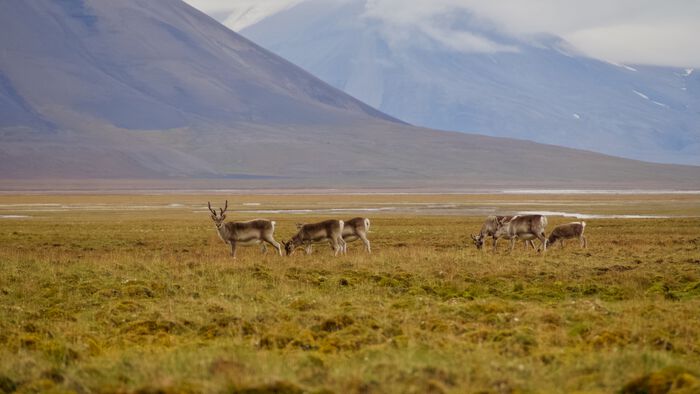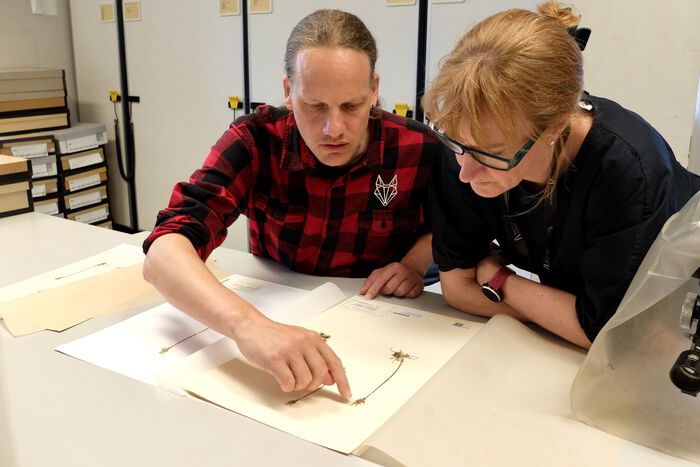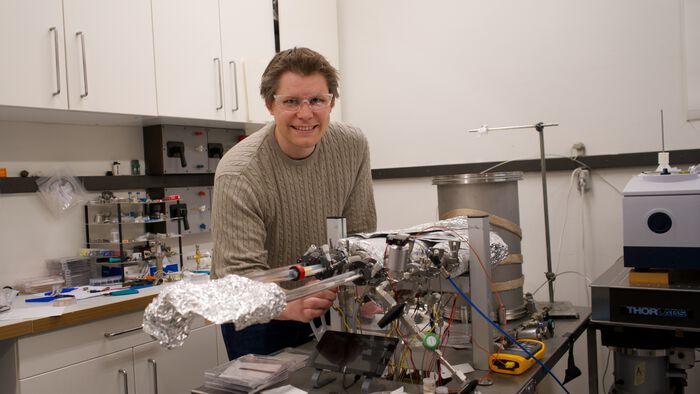19 December 2021, Prydz Bay, Antarctica
Cape Town quickly disappeared below the horizon. Our ice-breaker “Akademik Fedorov” followed a course between two large low pressure systems. Luckily, we could avoid strong winds, but the waves were quite heavy - we were still crossing the “roaring forties”.
Right south of Africa, the water and sea temperatures were about 10 degrees Celsius, but once we approached the southern latitude of 50 degrees, they quickly dropped to zero. Oceanographers, who were also monitoring the chemical composition of water, confirmed that we definitely crossed the Antarctic convergence zone. It started snowing, and the deck was quite slippery. The “furious fifties” showed some of their forcefulness: at some point the sea suddenly became calm and we were in an eye of the storm. A few hours later, the ship was fighting against strong wind and rolling heavily. Fortunately, this stormy weather did not last long, and once we approached Antarctica, the sky cleared up and the sea calmed down.
 (1).jpg)
We then saw the first icebergs. These lonely travellers in the middle of the ocean have been spectacular: huge blocks of ice, hundreds meters wide and a few storeys tall above the sea level. Their jagged edges were sometimes falling into the ocean sparking fountains of water. We admired this show from far away, passing binoculars from one hands to another. Not only icebergs, but also mighty albatrosses and other sea birds were joining us along the route. As well as groups of whales that started their migration. What were the odds that we met them the middle of the ocean?
After several days of sailing and changing time-zones three times, we crossed the Antarctic Circle and entered the Prydz Bay. “Akademik Fedorov” had to use its full power (until now it only used the fourth part of the propeller power), as it started manoeuvring to search for a safe passage through the ice field. Finally, about 40 km from the Progress station, the ice became thick enough that we could start logistic operations. The staff and cargo containers were transported to land by the helicopter. From there, they will travel further inland to the Vostok station, where the temperatures can drop below -70 degrees Celsius.
The weather is good. It is quiet, calm, sunny and relatively warm. There are three main colors that surround us: white, grey, and different shades of blue. White is the snow, grey are the clouds, and blue are ice and sky. In a distance we see icebergs frozen into the sea ice and guarding the continent. Further, on the southern horizon we see the barrier ice, where the ice climbes towards the center of the continent. From here it looks like a massive, white-blue icy hill that is covered with huge crevasses. Somewhere near us there is also the Sandefjord Cove. Check the maps!
.jpg)
We are not alone in the ice. Dozens of Emperor and Adele penguins are approaching the ship and bath in an open water by the aft. They walk and slide, and they have created a complex network of tracks around us. Penguins seem to be very social and curious about what this big red ship is doing here? Several skuas, the only predator birds in the area, are also next to the ship. At once a sea leopard came and tried to catch the small penguins, which quickly jumped out of the water. I missed the dinner watching this drama, but the leopard also left hungry. The frightened penguins stayed on the ice until morning, and two of them were keeping watch all night.
We will soon travel further to the Mirny station, where we will arrive within a few days, just in time for Christmas. I wish you all Happy Holidays!
God Jul!
Wojciech J. Miloch
Department of Physics, UiO
**********
Professor Wojciech Miloch, at the Department of Physics, UiO, is participating in the scientific expedition to the A.B. Dobrowolski station in Bunger Hills, East Antarctica. The goal of the expedition is to revitalise the research station and restart geophysical observations in Bunger Hills. Miloch writes a blog from the journey.
The 4th PARE is organised by the Institute of Geophysics of the Polish Academy of Sciences from the funds provided by the Ministry of Science and Education of Poland. The research program of WJM is supported by the European Research Council (ERC) under the European Union’s Horizon 2020 research and innovation programme (Grant Agreement No. 866357, POLAR-4DSpace), and in part by the Research Council of Norway Grant number 267408.
The official website of the 4th PARE is http://dobrowolski.igf.edu.pl
.jpg)




